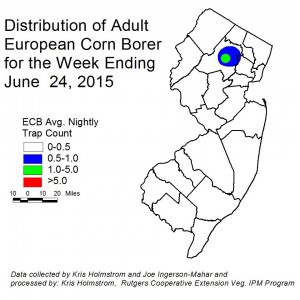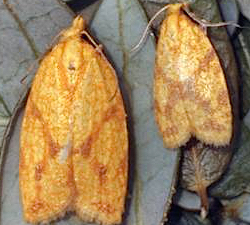Sweet Corn
European corn borer (ECB) adult activity is now very low. Only scattered individuals remain in northern NJ, while the activity in the southwestern part of the state has declined to nearly nothing. The first flight is over in most of NJ. Areas of highest activity is in parts of Morris County (see ECB map). ECB infestations are still present in sweet corn plantings. Feeding in pretassle stage plantings in the 30% range has been found in areas where IPM personnel are operating.Be sure to begin monitoring plantings for ECB feeding while they are still in the whorl stage. Consider treating when the number of infested plants in a 50 plant sample exceeds 12%. Feeding in the whorl stage will appear as numerous small holes (called “shot-hole”) on leaves, with damage present on consecutively younger leaves.
[Read more…]



